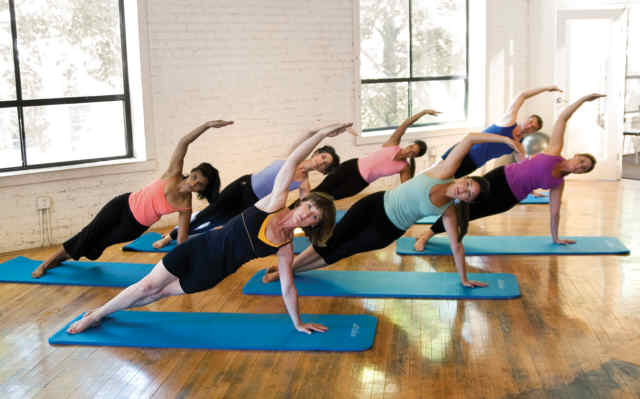Question:
I’m 36, and I’ve had low back pain caused by spinal stenosis for the last few years. I’m currently taking medications to help ease the pain, but I recently read that doing Pilates can help reduce back pain. I’m already very active. (I mostly walk and swim for exercise.) But now I’m wondering, should I be incorporating Pilates into my workout routine?
— Athens, GA
Answer:
Kudos to you for already having a regular exercise plan that includes walking and swimming! Although you’re already doing exercises that can help you manage low back pain caused by spinal stenosis, it would be beneficial to add Pilates to your
exercise routine.
 In fact, Pilates is an excellent addition to any exercise routine—regardless of whether you have back pain caused by spinal stenosis. But in your case, it can help you manage and prevent back pain.
In fact, Pilates is an excellent addition to any exercise routine—regardless of whether you have back pain caused by spinal stenosis. But in your case, it can help you manage and prevent back pain.
You already do a lot of cardio, but it’s important to do stretching and strengthening exercises, too. Pilates is considered both a stretching and strengthening exercise, so you’re in luck!
Get your doctor’s okay to incorporate it into your workout routine, especially because you have spinal stenosis. Spinal stenosis is a narrowing of the spinal canal. This narrowing can be caused by a variety of things such as a herniated disc or an injury. You don’t say what’s causing your spinal stenosis, but my guess is that you’ll benefit from doing Pilates no matter what’s causing your spinal stenosis.
Here’s why you may benefit from Pilates: The spine relies on muscles—including the core muscles—and ligaments to assist in movement, stability, and support. When you do Pilates, you increase your overall core strength.
Core strengthening, which means that you engage your core and back stabilizer muscles, is extremely effective in 2 key ways. It helps provide support for your back, and it helps re-build muscle memory (which is when your body becomes used to a movement
over time).
 Your back muscles can become so used to being strained, but core strengthening teaches these muscles to build new muscle memory to reduce your pain.
Your back muscles can become so used to being strained, but core strengthening teaches these muscles to build new muscle memory to reduce your pain.
When you do Pilates, you’ll learn specific exercises that focus on the core muscles, which can make both your core and low back stronger.
But where should you start? Asking your doctor if he or she can recommend a certified Pilates instructor is a good place to start. You can also attend a Pilates class at your local gym or buy or rent Pilates DVDs; Pilates DVDs that focus on preventing back pain are available, too. I think that incorporating Pilates into your regular exercise routine is a great idea. I also think that Pilates will be extremely helpful with managing your back pain caused by spinal stenosis in the long-term. Good luck, and keep up with your active lifestyle!
Source: www.spineuniverse.com; Dana L. Davis, MPT; March 22, 2012.







